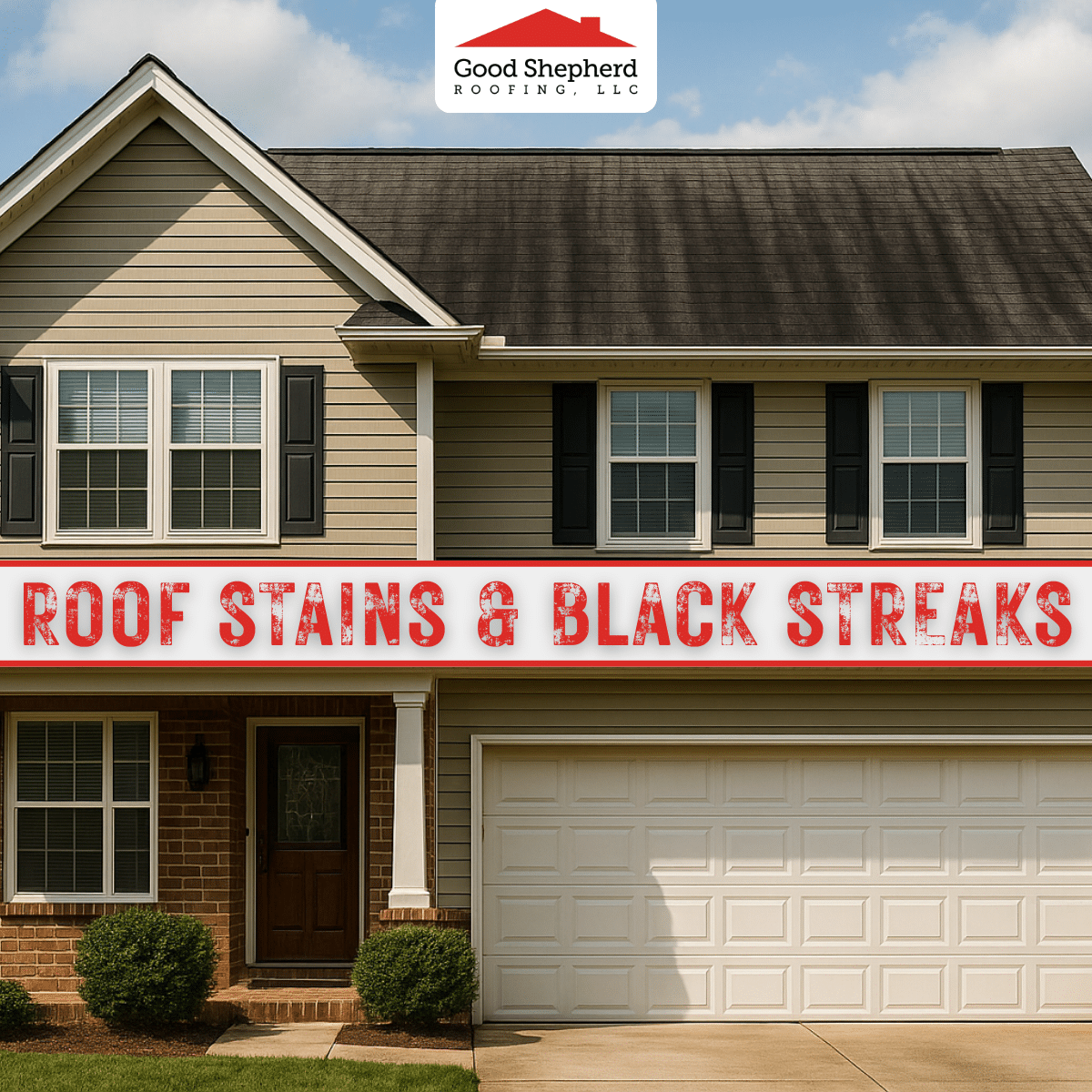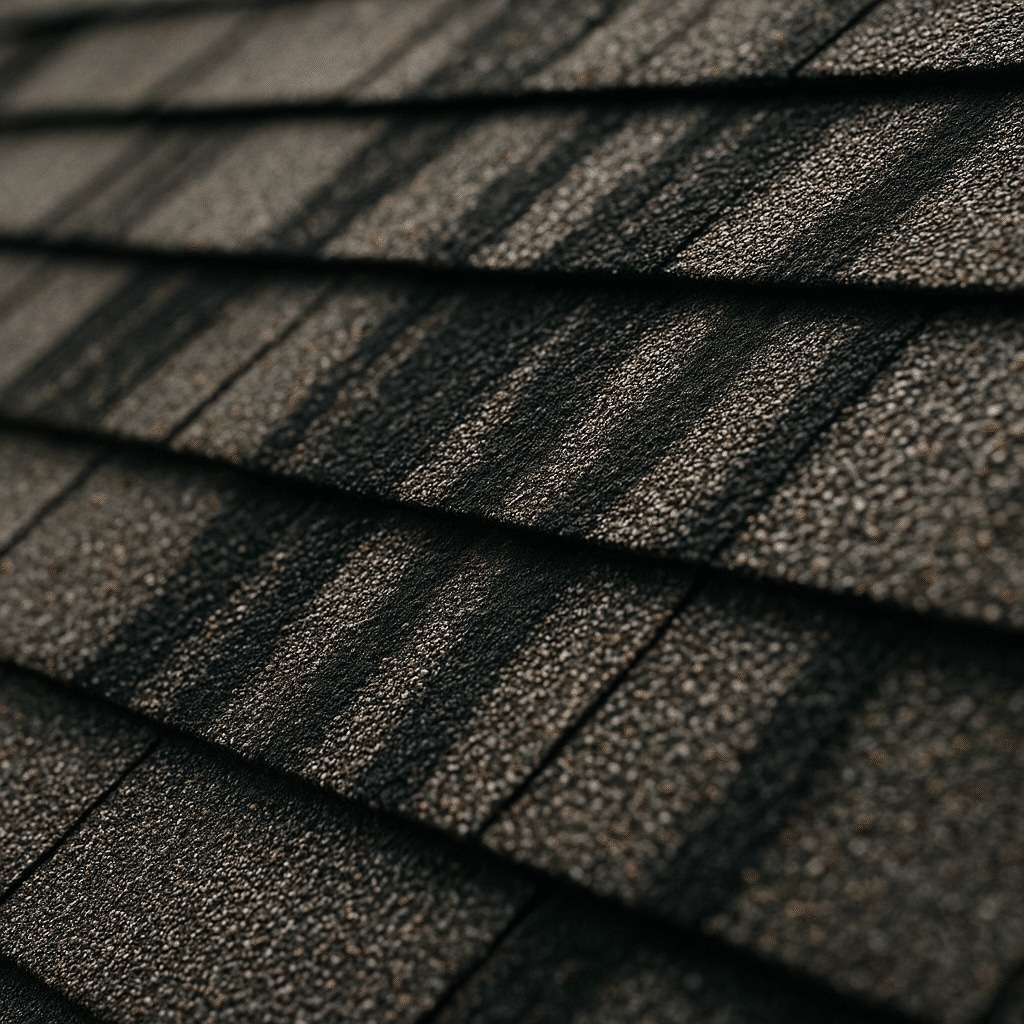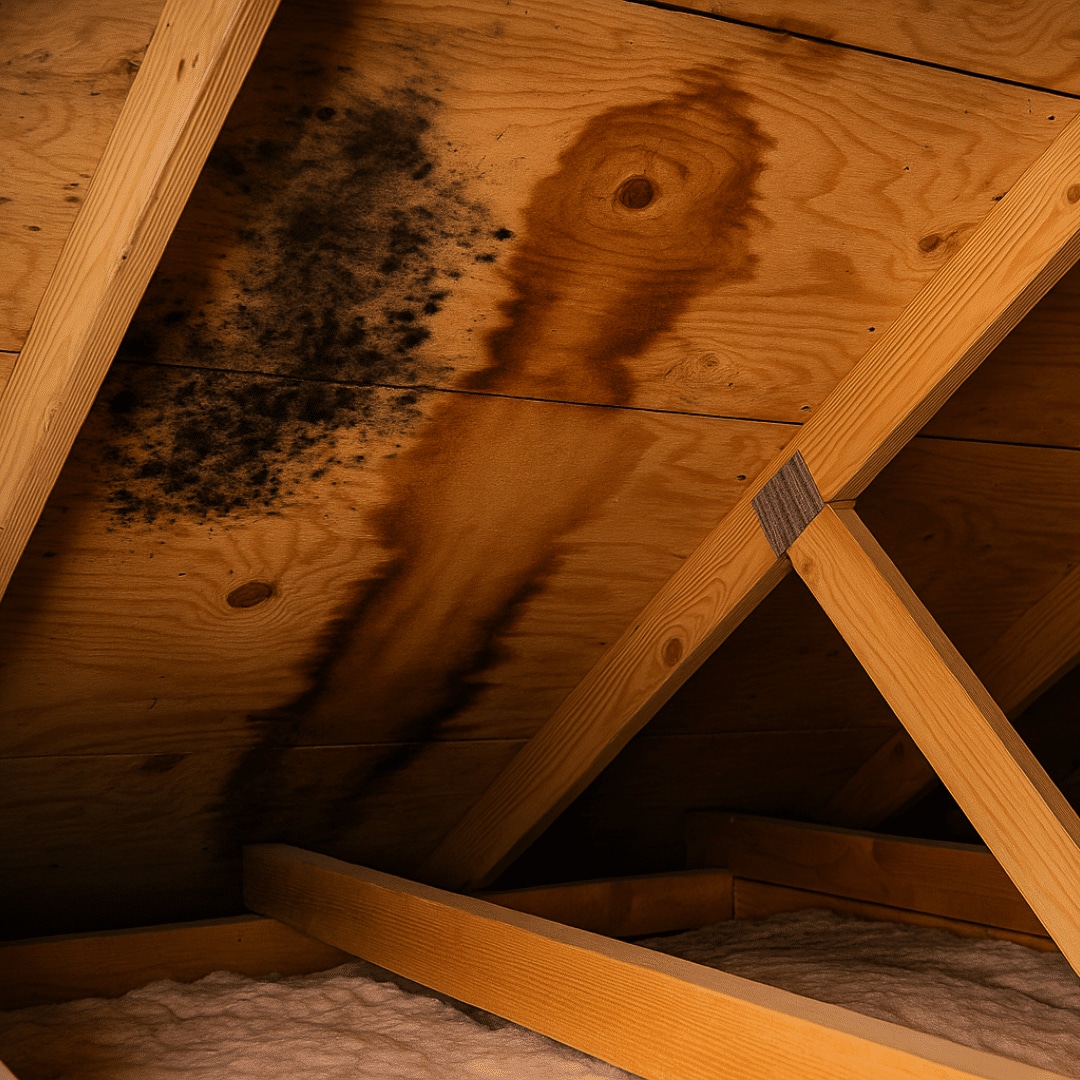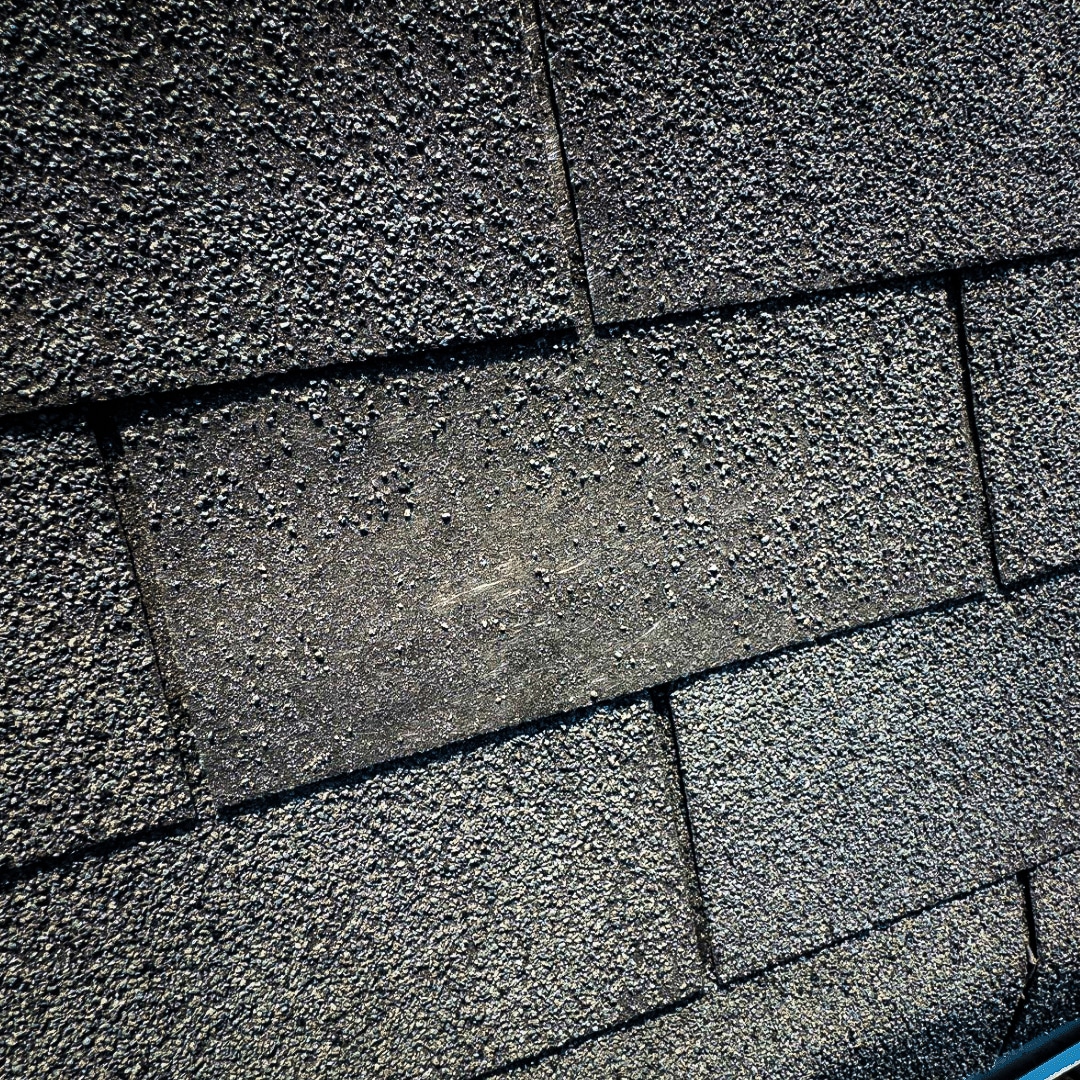The Moment You Notice Something’s Off
You pull into the driveway and notice long, dark streaks sliding down your roof. At first, you think it’s dirt, tree debris, or just shadows from the sun. But as the days go on, you realize those streaks aren’t going anywhere. That’s when the questions kick in:
- Is this just an ugly cosmetic issue?
- Or is my roof breaking down in a way I can’t see from the ground?
Homeowners across Georgia face this exact situation. Stains are one of the most common roofing concerns, but the causes aren’t always the same—and neither are the solutions. The key is knowing whether your roof is just showing its age cosmetically or if it’s signaling a bigger problem that requires immediate attention.

Why Roof Stains Happen ?
Not all black streaks are created equal. Here are the most common culprits homeowners run into:

Algae (Cosmetic Only)
In Georgia’s humid, warm climate, a type of bacteria called Gloeocapsa magma thrives on asphalt shingles. It feeds on the limestone filler in shingles, leaving behind those signature dark streaks. While algae makes a roof look neglected, it doesn’t usually cause direct structural damage. The main issue is cosmetic—your home can look older, poorly maintained, and less valuable than it actually is.
Tip: Many buyers and appraisers view algae as a negative even if it’s not technically damaging, which can still affect resale value.

Mold and Mildew (Moisture Problem)
If streaks are paired with a musty smell, moss growth, or dampness inside the home, it may not be algae at all—it could be mold or mildew. Unlike algae, mold indicates trapped moisture, either from clogged gutters, poor attic ventilation, or leaks. Mold is a health concern and can spread beyond the roof into ceilings, insulation, and drywall.

Shingle Deterioration (Serious Red Flag)
Sometimes dark streaks aren’t biological growth at all—they’re bare patches where the protective granules have worn off. When shingles lose granules, they expose the asphalt underneath, which can look like black streaks or shiny spots from the ground. This is a major warning sign that your roof is aging faster than expected and may soon fail.
The Cost of Ignoring Roof Stains
It’s easy to think, “I’ll just ignore it—it’s only cosmetic.” But the risks depend on the cause.
Accelerated Roof Wear:
If streaks are from granule loss or mold, your roof will break down more quickly than it should.
Leaks and Water Intrusion:
Moisture trapped under weakened shingles eventually finds its way inside.
Lower Curb Appeal:
Even if it’s only algae, streaks make a home look neglected. This can impact resale value or draw complaints from an HOA.
Insurance Trouble:
If stains are a result of damage and you don’t address them, insurers may deny claims for “lack of maintenance.”
What You Should Do Next ?
Here’s a simple action plan to take the guesswork out:
1. Get an Inspection.
A roofing professional can tell the difference between algae, mold, and granule loss. From the ground, they often look the same to a homeowner.
2. Rule Out Damage.
If it’s algae, cleaning treatments may help. If it’s granule loss or leaks, repair or replacement may be necessary.
3. Act Early.
The earlier you identify the cause, the more options you’ll have—whether that’s simple cleaning, filing a storm claim, or planning a replacement.
What Happens If You Ignore It?
Pretending streaks are “just cosmetic” can backfire. Here’s what happens if you leave them:
Leaks Multiply:
Once shingles weaken, water sneaks into underlayment and decking.
Mold Spreads Indoors:
What starts on the roof can end up in ceilings, insulation, and even air quality.
Bigger Bills Later:
A small problem today often turns into a costly full replacement tomorrow.
In short: stains never fix themselves—they either stay ugly or mask a deeper problem.
From Embarrassed to Confident
Before: You feel embarrassed pulling into your driveway, staring at streaks that make your home look old and neglected. Worse, you don’t know if it’s just cosmetic or the start of expensive repairs.
After: You’ve had a professional inspection, ruled out hidden damage, and taken the right steps. Whether it’s a quick cleaning or a roof replacement, you know exactly what’s happening and feel confident your home is protected.
That’s the difference between guessing and knowing.
Ready for a Clear Answer?
Noticed black streaks on your roof? Don’t leave it to chance. Schedule your free roof inspection today and find out if it’s cosmetic—or a bigger problem.

